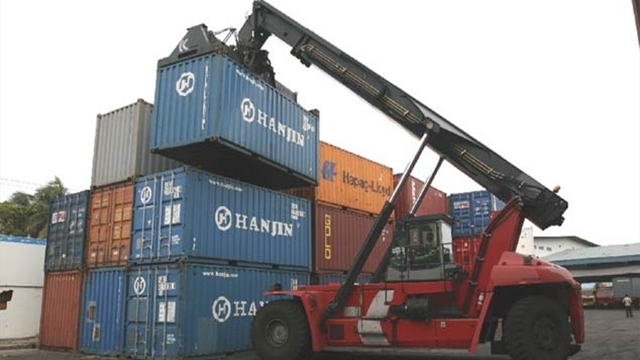Rubel Rana
Published:2018-05-27 16:14:39 BdST
Exports get raw deal from both big, small SAARC nations
FT ONLINE
Exports from Bangladesh to SAARC countries are being subjected to various types of non-tariff and para-tariff barriers, according to a study carried out by the Bangladesh Tariff Commission (BTC) recently.
The study has found that both big and small members of the South Asian grouping are subjecting exports from Bangladesh to non-tariff and para-tariff barriers.
The putting up of all types of barriers has led to a very slow growth of Bangladesh's exports to other members of the South Asian Association of Regional Cooperation (SAARC), the study noted.
The non-tariff and para-tariff barriers used in the case of Bangladeshi exports do mainly relate to standard technical measures, including laboratory testing, chemical testing, labelling registration and quarantining.
Besides, the exports face regulations on customs procedures such as anti-dumping duty, countervailing duty, cess and state level para-tariff, the BTC study said.
The Ministry of Commerce (MoC) had asked the BTC to carry out the study following allegation made by local businesses about various types of barriers often put up by other SAARC member states to the entry of Bangladesh exports to their respective markets.
The study said the non-tariff barriers (NTBs) that Afghanistan uses against Bangladesh exports include labelling, testing and certificate requirements.
Major exports to that country include pharmaceuticals, jute goods and electric accumulator.
Afghanistan also imposes a range of para-tariffs in the form of levy, licensing fees and royalty.
Bangladesh's major exports to Bhutan include vegetables, fruit, nut, and foods preparations, pharmaceuticals, plastics, electrical and electronic equipment. Those do also face various NTBs, the study said.
Imports of raw materials for industrial use in Bhutan must have a minimum value addition at the rate 40 per cent.
Export to India, the largest trading partner of Bangladesh in South Asia, has not been rising due to various NTBs and PTBs.
This is happening despite the fact Bangladesh is entitled to duty-free and quota-free access to Indian market as a least developed country (LDC), the study mentioned.
It said regulatory measures taken by India have created obstacle to the export of Bangladeshi goods to its market.
Apart from newly introduced goods and services tax (GST), Bangladesh's exports are subjected to 'integrated tax' ranging between 0.25 per cent and 28 per cent, depending on the products, the study mentioned.
All these are in addition to normal customs duty, the study added.
In the Maldives, Bangladesh's exports do also face various NTBs along with PTBs in the form of ad valorem development fee on selected imported products, the study said.
The BTC study noted that Bangladesh's major exports to Nepal include textile fibres, farm products, pharmaceutical products, woven garments and electric accumulators. These goods too face NTBs, it added.
Besides, Bangladesh's other exports face para-tariffs in the form of ad valorem development fee, it added.
The customs authority of Nepal does also impose VAT, excise duty, and other fees on imports from Bangladesh.
The study also found that Bangladesh's hydrogen peroxide export to Pakistan faces NTBs due to technical barriers to trade (TBTs) reasons. It is also facing anti-dumping duty, the BTC study said.
Rubber export to Pakistan faces NTBs like authorisation requirements for TBT reasons, it said.
"In Pakistan, exports also face sales tax at general level of 17 per cent. Higher taxes are charged on cigarettes, sugar, cement and air travel. A special federal excise tax of 1.0 per cent is also being realised on all products", the BTC said.
Major exports from Bangladesh to Sri Lanka are drilling machines, pharmaceutical products, potatoes, electric accumulators and jute yarn.
Pharmaceuticals export faces licensing requirements while potato faces restriction on the use of certain substances on foods the study said, adding Sri Lanka also imposes a number of additional levies and charges.
The tariff commission observed that export of Bangladesh to Bhutan faces NTBs which have no proper legal interpretation.
In India, sanitary and phytosanitary (SPS) measures and TBT-related measures do create hurdles since the testing, inspection and certifications are being done by six different authorities, the study said.
The impediments relating to banking are some of the identifiable NTBs while quality standards certificate from Bangladesh is not accepted by India, the study observed.
Businesses face hurdles while exporting goods to the north Indian states, the study noted.
For instance, it said, the import-export number is issued from Kolkata which is at least 1,680 kilometres away from Agartala.
Besides, since the land ports on the Indian side are logistically poor, only limited quantities of commodities can pass through those, the study said.
In addition, the Indian authorities tend to subject Bangladesh exports to cumbersome customs procedures, manual clearance and excessive inspection.
A senior official at the ministry of commerce said the government tries to reduce NTBs and PTBs through bilateral discussions though the SAARC member states, under the SAFTA deal, are required to create a trade-friendly environment by removing barriers on their own.
"If such barriers are removed, intra-SAARC trade would go up manifold from the existing level," he noted.
The objectives of the SAFTA, which came into force in 2006, have remained largely unmet so far, he added.
Unauthorized use or reproduction of The Finance Today content for commercial purposes is strictly prohibited.


